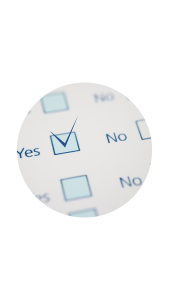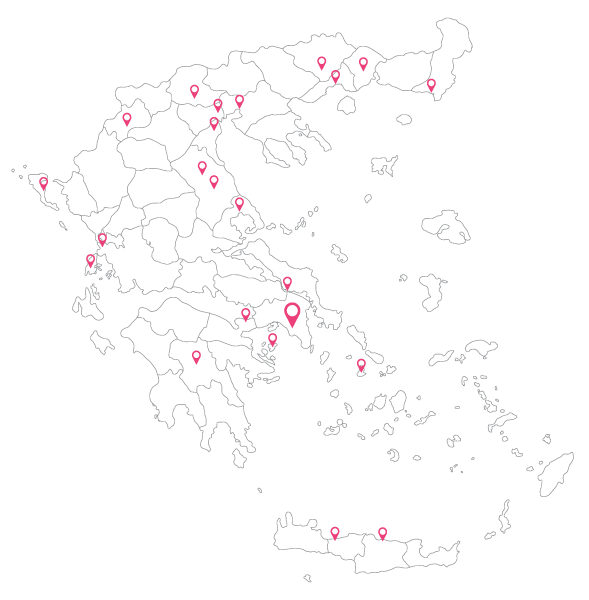
Give your students the best chance of success
Our candidates can now get a Cambridge English Qualification in a faster, flexible way.
Apart from having the option to prepare and apply for the traditional, paper-based exams, they may choose the all new Cambridge Digital Examinations.
The qualification at the end is the same, but there are differences in the exam delivery, experience and timing, as one can see in the table below.
Fast
Results will be delivered in
5-10 working days
Give students the tools they
need take to control of their next
step sooner.
Flexible
Exam sessions are available
up to 365 days a year
Put more students forward when they’re ready. Talk to your chosen exam centre about their schedule.
Fast
Results will be delivered in
5-10 working days
Give students the tools they need take to control of their next step sooner.
Don't miss sample exams and video tutorials
- A2 KEY for Schools
- B1 PET for Schools
- B2 FCE for Schools
- C1 Advanced
- C2 Proficiency
SPEAKING TEST VIDEOS WITH EXAMINERS’ COMMENTS
This video will help you understand what happens during a speaking test.
You can also download examiner feedback.
Part 1 (Interview)
What do candidates have to do? Respond to questions, giving factual or personal information. How long do candidates have to speak? 3–4 minutes.
Part 2 (Discussion)
What do candidates have to do? Candidates discuss likes and dislikes, and give reasons.
How long do candidates have to speak? 5–6 minutes.
Cambridge English speaking tests take place with one or two other candidates, and two examiners.
SPEAKING TEST VIDEOS WITH EXAMINERS’ COMMENTS
This video will help you understand what happens during a speaking test.
Part 1 (Interview)
What do candidates have to do? Respond to questions, giving factual or personal information.
How long do candidates have to speak? 2 minutes.
Part 2 (Extended turn)
What do candidates have to do? Describe one colour photograph, talking for about 1 minute.
How long do candidates have to speak? 3 minutes.
Part 3 (Discussion)
What do candidates have to do? Make and respond to suggestions, discuss alternatives and negotiate agreement.
How long do candidates have to speak? 4 minutes.
Part 4 (General conversation)
What do candidates have to do? Discuss likes, dislikes, experiences, opinions, habits, etc.
How long do candidates have to speak? 3 minutes.
Cambridge English speaking tests take place with one or two other candidates, and two examiners. This makes your test more realistic and more reliable.
SPEAKING TEST VIDEOS WITH EXAMINERS’ COMMENTS
This video will help you understand what happens during a speaking test.
You can also download examiner feedback.
Time allowed: 14 minutes per pair of candidates
Number of parts: 4
The student has to talk: with the examiner with the other candidate on their own
Part 1 (Interview)
What’s in Part 1? Conversation with the examiner. The examiner asks questions and students may have to give information about themselves, talk about past experiences, present circumstances and future plans.
What do students have to practise? Giving information about themselves and expressing opinions about various topics.
How long does each student have to speak? 2 minutes
Part 2 (Long turn)
What’s in Part 2? The examiner gives the student a pair of photographs to talk about and they have to speak for 1 minute without interruption. The questions about the photographs are written at the top of the page to remind the student what they should talk about. When they have finished speaking, the student’s partner then has to answer a short question from the examiner about their photographs.
What do students have to practise? Talking on their own about something: comparing, describing, expressing opinions.
How long does each student have to speak? 1 minute per candidate, plus a 30-second response
Part 3 (Collaborative task)
What’s in Part 3? Conversation with the other candidate. The examiner gives the students a question and some written prompts. The students discuss these together for two minutes. The examiner will then ask them to make a decision together about the topic they have been discussing.
What do students have to practise? Exchanging ideas, expressing and justifying opinions, agreeing and/or disagreeing, suggesting, speculating, evaluating, reaching a decision through negotiation, etc.
How long does each student have to speak? A 2-minute discussion followed by a 1-minute decision-making task
Part 4 (Discussion)
What’s in Part 4? Further discussion with the other candidate, guided by questions from the examiner, about the same topic as the task in Part 3.
What do students have to practise? Expressing and justifying opinions, agreeing and/or disagreeing.
How long does each student have to speak? The discussion should last 4 minutes.
Cambridge English speaking tests take place with one or two other candidates, and two examiners. This makes your test more realistic and more reliable.
SPEAKING TEST VIDEOS WITH EXAMINERS’ COMMENTS
This video will help you understand what happens during a speaking test.
You can also download examiner feedback.
Part 1 (Interview)
What’s in Part 1? Conversation between the candidates and the interlocutor. The examiner asks questions and you may have to give information about your interests, studies, careers, etc.
What do I have to practise? Giving information about yourself and expressing your opinion about various topics.
How long do we have to speak? 2 minutes
Part 2 (Long turn)
What’s in Part 2? The interlocutor gives you three pictures and asks you to talk about two of them. You have to speak for 1 minute without interruption and the interlocutor then asks the other candidate to comment on what you have said for about 30 seconds. The other candidate receives a different set of photographs and you have to listen and comment when they have finished speaking. The questions you have to answer about your photographs are written at the top of the page to remind you what you should talk about.
What do I have to practise? Talking on your own about something: comparing, describing, expressing opinions, speculating.
How long do we have to speak? 1 minute per candidate, plus a 30-second response from the second candidate.
Part 3 (Collaborative task)
What’s in Part 3? Conversation with the other candidate. The examiner gives you spoken instructions with written prompts which are used in a discussion. You have to talk with the other candidate for about 2 minutes (3 minutes for groups of three) about the written prompts. After the discussion time, the examiner will ask you another question which requires you to make a decision. You have 1 minute to talk together and make the decision (2 minutes for groups of three).
What do I have to practise? Exchanging ideas, expressing and justifying opinions, agreeing and/or disagreeing, suggesting, speculating, evaluating, reaching a decision through negotiation, etc.
How long do we have to speak? 3 minutes (a 2-minute discussion followed by a 1-minute decision-making task)
Part 4 (Discussion)
What’s in Part 4? Further discussion with the other candidate based on the topics or issues raised in the task in Part 3. The interlocutor asks each of you some questions and you discuss them with the other candidate.
What do I have to practise? Expressing and justifying opinions, agreeing and/or disagreeing.
How long do we have to speak? 5 minutes
Cambridge English speaking tests take place with one or two other candidates, and two examiners. This makes your test more realistic and more reliable.
SPEAKING TEST VIDEOS WITH EXAMINERS’ COMMENTS
This video will help you understand what happens during a speaking test.
You can also download examiner feedback.
Time allowed: 16 minutes per pair of candidates
Number of parts: 3
You have to talk: with the examiner with the other candidate on your own
Part 1 (Interview)
What’s in Part 1? Conversation between the interlocutor and each candidate. The examiner asks each of you a series of questions, addressing a question to each of you in turn, to give you an opportunity to talk about yourselves.
What do I have to practise? Giving information about yourself and expressing your opinion or speculating about various topics.
How long does Part 1 last? 2 minutes
Part 2 (Collaborative task)
What’s in Part 2? The interlocutor gives you some spoken instructions and one or more pictures to look at. First, you have to answer a question which focuses on your reaction to aspects of one or more pictures (1 minute). The second part is a decision-making task which you have to do with the other candidate.
What do I have to practise? Sustaining an interaction: exchanging ideas, expressing and justifying opinions, agreeing and/or disagreeing, suggesting, speculating, evaluating, reaching a decision through negotiation, etc.
How long does Part 2 last? 4 minutes
Part 3 (Long turn and discussion)
What’s in Part 3? The interlocutor gives you a card with a question and some ideas on it and you have to speak for about 2 minutes on your own. After you finish, your partner has to comment and the interlocutor then asks you both a question on the same topic. The interlocutor follows the same procedure with your partner and then leads a discussion with both of you.
What do I have to practise? Speaking on your own for a longer time, expressing and justifying opinions, developing topics.
How long does Part 3 last? 10 minutes (2-minute long turn for each candidate and then approximately 6 minutes for the discussion).
Cambridge English speaking tests take place with one or two other candidates, and two examiners. This makes your test more realistic and more reliable.
Digital features to put candidates in control
Listening
Headphones with volume control for comfort and concentration.
Writing
Word count, editable text, font size and colour adjustment for peace of mind.
Reading
Notes and highlighting on screen for keeping track.
Comparison
| Features | Paper-based | Digital |
|---|---|---|
| Exam location | At an authorised exam centre, school or external venue | |
| Availability | Set dates | Up to 365 days a year* |
| Registration | Up to 4 weeks before exam date | Up to 2 working days before exam date* |
| Levels | Pre A1 Starters – C2 Proficiency (includes Young Learner exams) | A2 Key – C2 Proficiency |
| Exam set up | On paper | Available on PCs, laptops and Macs |
| Task types | Identical | |
| Exam content | Same questions for all candidates | Questions randomly allocated |
| Results | 4–6 weeks after exam date | 5–10 working days after exam date |
| Speaking test | Face-to-face | |
| Listening test | Digital audio player | Headphones with volume control |
| Reading and Writing test | Paper with a pen and pencil | Computer with keyboard, screen and mouse |
| Certificates | Paper certificate sent to the exam centre within 3 months of the exam date | |










